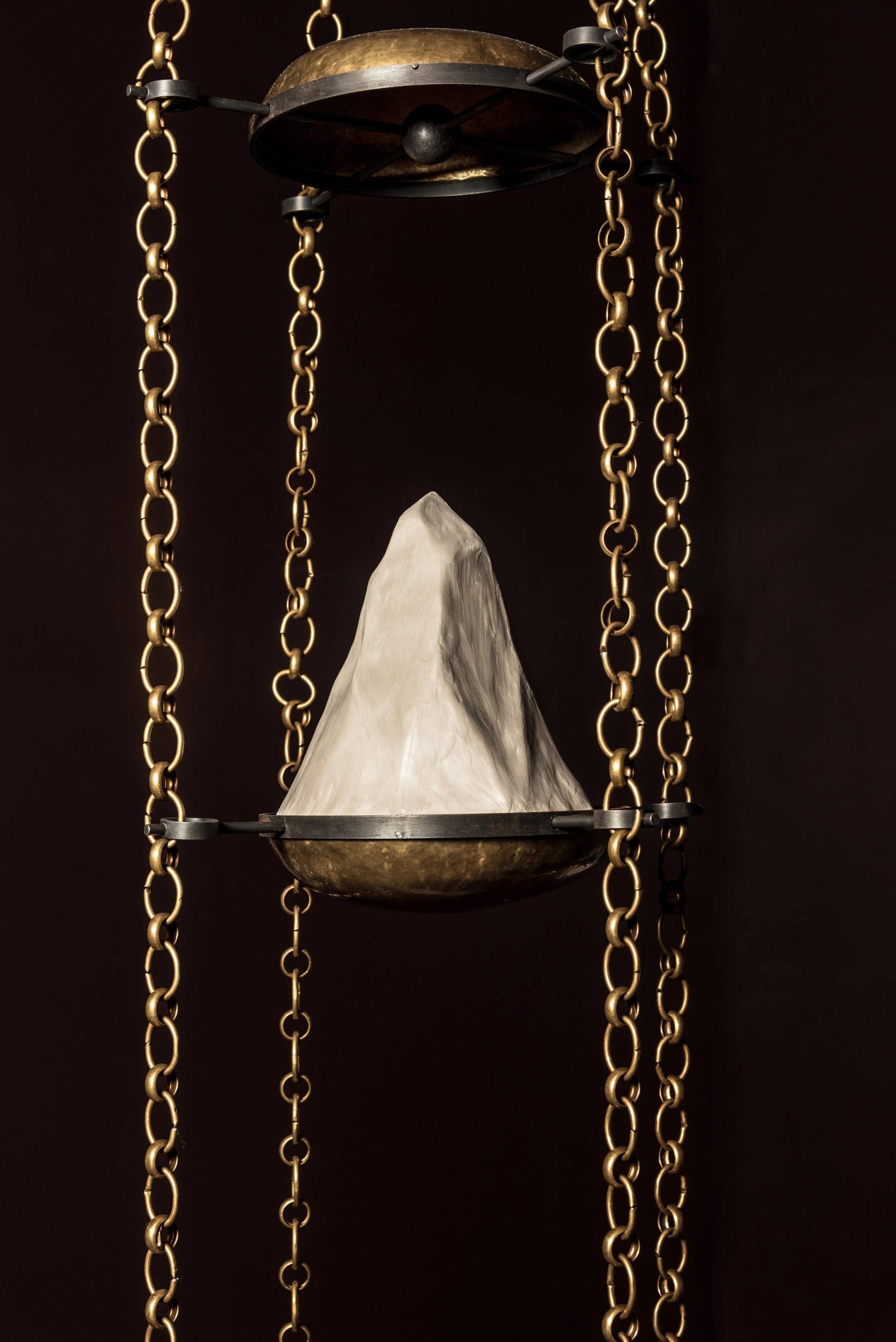• Above: Veilleuse, Victor FLeury Ponsin • © Amedeo Abello
In our contemporary societies, stone is too often reduced to a simple construction material, an inert element at the service of aesthetics or functionality. However, it is essential to recall a forgotten truth: stone is alive.
’Stone, far from being dead, lives an active life, obscure and slow perhaps, imperceptible to our senses, but measurable nevertheless and almost eternal.’ - Bulletin de la Société de Géographie d’Alger, J. Desparnet, 1923.
Until the middle of the 20th century, many cultures still considered stone to be a divine material, attributing to it a deep spiritual and symbolic dimension. Rocks and natural formations became objects of veneration, veritable points of connection between the human and the sacred. For the Greeks, these stones established a direct link with Gaia, the Earth, the very embodiment of nurturing and protective nature. In other cultures, such as those of the Middle East, monoliths, called ’Betyls’, were perceived as ’houses of God.’ These sacred stones were not simply material objects, but divine incarnations, silent witnesses of the divine, offering guidance and protection. These beliefs have forged a deep respect for stone, perceived not only as a material, but as a living entity, a bearer of power and meaning.
Today, we have reduced it to a purely decorative or utilitarian role. However, marble takes 150 million years to form. A silent witness to geological upheavals, it carries within it a memory that we must neither ignore nor trivialise. Without necessarily attributing a sacred value to it, we have a duty to show it deep respect, both in its selection and in its use.
Designers, architects and craftsmen play a fundamental role. Choosing a stone cannot be a trivial act: each block has stood the test of time, seen civilisations rise up and disappear. Stone is a living heritage; we must treat it with consideration and intelligence to preserve the dialogue between man and his environment. Too often, we reduce it to its colour, its veins or its technical properties, thus depriving it of its essence. By confining it to rigid and one-sided designs, sometimes covering it with varnish to better petrify it, we stifle it.
The designer cannot conceive a project without a deep understanding of the material he is working with. He must be at the service of the stone, not the other way around. Craftsmen and designers are not there to tame the stone, but to reveal it. Although the latter is a rational substance, it is through drawing, carving and sculpting that it finds a coherent place in our environment.
By breathing new life into stone, the craftsman and the designer must ensure that its identity is respected and that the sacred role it has played throughout the ages is honoured. Stone is not just a material; it is a living witness to the past, an imprint of time, a divine presence that the craftsman honours through his expertise and that the designer must celebrate through his creativity and sensitivity. •
